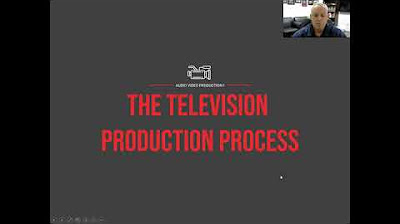Games Pod 03: Game Design Process
Summary
TLDRIn this podcast, the game design process is broken down into key phases: pre-production, production, and post-production. The speaker guides listeners through the essential steps for developing a game, including concept development, research, prototyping, visual design, and user testing. Using Alto’s Adventure as a case study, the podcast emphasizes the importance of iteration in design and the use of tools like Unity and Illustrator. The process mirrors real-world game development in small studios, underscoring the value of clear planning and rapid execution to bring a game from concept to playable prototype.
Takeaways
- 😀 The game design process consists of distinct phases: pre-production, production, and post-production.
- 😀 Game developers need to balance creativity with a structured workflow, which includes asset creation, prototyping, and testing.
- 😀 The concept development phase involves background research and precedent research to guide the game’s design direction.
- 😀 Creating a clear design document is crucial for outlining the game’s mechanics, aesthetics, and overall structure.
- 😀 User testing is essential for identifying issues and refining the gameplay, with feedback informing later iterations of the game.
- 😀 Alto's Adventure serves as a case study, demonstrating how a small team can bring a game idea to life through thoughtful design and testing.
- 😀 Researching similar games, like Journey and Pro Skater 2, helps inform the visual and gameplay elements of a new project.
- 😀 Visual design in game development should evolve from rough sketches to more refined, digital artwork to achieve the desired atmosphere.
- 😀 Working with external collaborators, like graphic designers, can help achieve a polished and cohesive look for the game.
- 😀 Iteration and refinement are key—game elements like the title screens and environmental details improve significantly through multiple design revisions.
Q & A
What is the overall focus of the game design process discussed in the video?
-The video focuses on breaking down the key steps of game development, from conceptualization to production, including design, asset creation, prototyping, and testing. It aims to provide a clear overview of how to sequence tasks for game development projects in a semester.
How is the workflow for game development divided in the video?
-The workflow is divided into three main categories: Artist/Designer, Tech Architects, and Tool Vendors. These categories define the roles and responsibilities in the development process, with artists and designers focusing on creating game content and the technical architects handling the software and platform tools.
What are the key phases of the game development process mentioned in the transcript?
-The game development process is broken into three phases: Pre-production (concept development, background research), Production (asset creation, animation, game design document), and Post-production (testing, user feedback, final build). Each phase has its set of tasks that help guide the project toward completion.
What tasks are assigned during the pre-production phase?
-During pre-production, tasks include defining the concept, researching the topic, conducting precedent research, and finalizing the story and concept. This phase helps to lay a strong foundation for the game's development.
What is the role of user testing in the development workflow?
-User testing plays a crucial role in identifying problems, gaps, or areas of confusion within the game. It allows developers to gather feedback, make refinements, and address any issues before finalizing the game, ensuring the best possible user experience.
How did Alto’s Adventure go through the game design process?
-Alto's Adventure followed a similar process, starting with the concept of a snowboarding game. The team conducted precedent research, developed the visual style, and iterated through prototypes. They focused on visual storytelling, atmosphere, and gameplay mechanics, eventually refining the design with user feedback.
What was the significance of precedent research for Alto’s Adventure?
-Precedent research was crucial for Alto's Adventure, as it helped the designers draw inspiration from existing games like Journey and Tony Hawk’s Pro Skater. This research informed the game's art style and gameplay mechanics, which were essential in shaping its unique atmosphere.
What role did visuals play in Alto’s Adventure design, and how were they developed?
-Visual design was central to Alto’s Adventure, with the team opting for a stylized, minimalist aesthetic. The design evolved from basic sketches to more detailed digital art, including seasonal changes in landscapes to evoke different moods. The visuals were refined throughout development to enhance the game's atmosphere.
How did the game development team handle prototyping in Alto’s Adventure?
-The team created an initial prototype using a 2D framework, but quickly realized its limitations. They switched to Unity to build a more robust prototype. This allowed them to refine the game's mechanics and visuals, addressing issues with movement and graphical detail.
What can we learn from Alto’s Adventure regarding the iterative nature of game development?
-Alto’s Adventure highlights the importance of iterative design. The game went through multiple iterations, from rough sketches to polished visuals and refined mechanics. This process of continual refinement helped ensure that the final product was both engaging and visually appealing.
Outlines

This section is available to paid users only. Please upgrade to access this part.
Upgrade NowMindmap

This section is available to paid users only. Please upgrade to access this part.
Upgrade NowKeywords

This section is available to paid users only. Please upgrade to access this part.
Upgrade NowHighlights

This section is available to paid users only. Please upgrade to access this part.
Upgrade NowTranscripts

This section is available to paid users only. Please upgrade to access this part.
Upgrade Now5.0 / 5 (0 votes)





